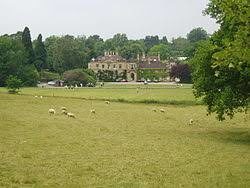
Waldorf Education has always been a part of Winslow’s life. She and her brother were among the earliest Waldorf home-schooled children when their parents took them on a trip around the world. She spent several months in Jean Zay’s class at the Rudolf Steiner School of New York City, before moving to Italy and then to England. She graduated twelfth grade from Michael Hall School in Sussex, England, with Advanced Level Degrees in English, History, and French, and the Certificate for the Use of English.
College – career – marriage followed. When her own children were in pre-school and kindergarten, she co-formed a home-schooling Waldorf playgroup in New York City, before moving to the Berkshires where they attended the Great Barrington Rudolf Steiner School. Amazingly, her daughter Samantha’s class teacher was also Jean Zay!
Winslow received her High School Waldorf Teaching Certification from the Center for Anthroposophy in New Hampshire. High School courses she has taught at the Berkshire Waldorf High School, the Honolulu Waldorf School, and the Waldorf School of San Diego include History Through Language, The Novel, The Odyssey, Parzival, Poetry, The Romantics, Shakespeare, World Religions and a wide variety of creative, expository, and journalistic writing classes. She also taught middle school English and some main lessons at the Great Barrington Rudolf Steiner School.
Some sample seminars include:
History Through Language
This course covers the significant role language plays in human evolution and development. Before writing was developed, the idea and the word for the idea were the same: experience and language were inseparable. How and when did this change? What impact did drawing images of language and later creating an actual alphabet have on human consciousness and the history of the world? We begin with an outline of the origins of language, then proceed to the history of writing, covering pictograms, hieroglyphs and the alphabets that developed later. The story of the English language is and the history of poetry are also explored.
Parzival
11th graders study the story of “Parzival,” written in the 11th century by Wolfram Von Eschenbach, not only for its literary merit, but because of the way the author presents the essence of human existence, both worldly and spirtual, against the panorama of battles and tournaments and Parzival’s long search for the Grail. The world of knighthood, of love and loyalty, and human endeavor despite cruelty and suffering, shows us the inherent unity between physical existence and our quest for something beyond human existence.
World Religions
Students learn about the varieties of religious experience, including beliefs, teachings, traditions, and practices of seven major religions: Hinduism, Buddhism, Taoism, Judaism, Christianity, and Islam, and we touch on Primal religions (mostly focusing on Aboriginal spirituality).
Using Huston Smith’s classic text, World Religions, and its accompanying sacred foundational texts, The World’s Wisdom by Philip Novak, by the end of this course, students
- know the basic biographies of the founders or leaders of the religions: (Buddha, Lao-Tzu, Abraham, Christ, Muhammad)
- be able to identify specific religious beliefs, regarding creation, birth, death, god, destiny, and afterlife
- be familiar with some of the sacred texts of each religion and where they came from
- have a basic historical and geographical background of each religion.
Literature: Two Novels by Graham Greene
Graham Greene’s life spanned the twentieth century, and he was one of its greatest novelists. In this seminar students are given a survey of the twentieth century through its literature, while focusing on Greene’s work in particular. Human struggles such as fidelity and betrayal, despair and faith, abhorrence and passion, are identified in his novels as well as in others. Greene also delved into history, politics and religion in his essays, criticism, screenplays, and autobiographies, which we also explore. We focus intensively on two texts in particular: Our Man in Havana and The Third Man. This seminar is an excellent complement to Modern History in ninth grade.
Her favorite advice she received while at the Waldorf High School Teacher Training was from Douglas Gerwin, director of the program:
“Never forget the four F’s:
be fair,
be firm,
be flexible,
And if all else fails . . .
be funny.”
